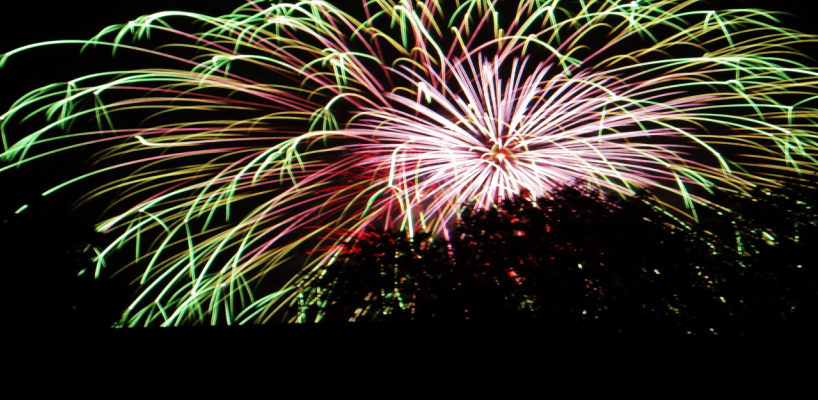Fireworks on the Fourth of July are as American as baseball and apple pie. Also known as “Independence Day,” it has been a federal holiday in the United States since 1941, while the traditions used to celebrate the day go back to the 18th century.
In fact, the first Independence Day was celebrated when no foreign nation actually recognized the United States of America as an independent nation, and the courts of Europe largely saw it as just a colonial uprising that would be put down by the British Empire. There were actually independence celebrations in the summer of 1776 where cannons and muskets were held – and some communities even held mock funerals of King George III to symbolize the end of the monarchy’s hold on America. The first annual commemoration of independence on July 4 occurred a year later in 1777 while Congress was still occupied with the war.
To mark the anniversary in 1778, General George Washington didn’t have fireworks, but instead, he issued double rations of rum to all his soldiers. And in 1781, months before the key American victory at the Battle of Yorktown, Massachusetts became the first state to make July 4th an official state holiday.
The big fireworks displays actually came later.
The Origins of Fireworks in China
No one knows who invented “fireworks,” but like gunpowder, its origins can be traced back to China. It is believed that fireworks were developed in the second century B.C. in Liuyang, and the first “firecrackers” were actually little more than dried bamboo stalks “exploded” with a bang when thrown into the fire. The heat would overheat the hallow air pockets, and these early firecrackers were often employed to ward off evil spirits.
It wasn’t until sometime between the 7th and 10th centuries AD that gunpowder was invented by a Chinese alchemist, whose name is lost to time. Once again bamboo was employed, and this time a mixture of potassium nitrate, sulfur, and charcoal was poured into hallowed out bamboo. It made an even louder bang than the naturally occurring bamboo firecrackers.
To Europe and the New World
As gunpowder made its way to Europe between the 13th and 15th centuries, fireworks accompanied it. It was during the Renaissance that the Italians became the first Europeans to manufacture fireworks – but soon these pyrotechnics traveled throughout the courts of the most powerful rulers, who employed these fiery displays to “enchant their subjects and illuminate their castles on important occasions.”
As these spread across Europe, the early fireworks, which were orange in color, were used to commemorate military victories, religious events, and royal celebrations. What is notable too is that these were fired into the sky by “firemasters” while their assistants were known as “green men” for the leaves they wore to protect themselves from the sparks. It was actually a dangerous job as they could be seriously injured or killed if the fireworks malfunctioned. However, the green men also served to tell jokes and basically warm up the crowds.
King James II of England was reported to be quite the fan of the pyrotechnics and honored his firemaster with a knighthood.
Fireworks made their way to the American colonies and as in Europe, were used for festival occasions. It was actually Founding Father John Adams who can be credited with fireworks being part of the Fourth of July celebrations. In a letter to his wife dated July 2, 1776, he wrote:
“This day will be most memorable in the history of America,” he predicted. “I am apt to believe that it will be celebrated by succeeding generations as the great anniversary festival… It ought to be solemnized with pomp and parade… bonfires and illuminations [fireworks]… from one end of this content to the other, from this time forward forevermore.”
The first Fourth of July celebrations that took place in 1777 – and especially the fireworks display as well as the firing of cannons and muskets – were likely a morale booster. The war hadn’t exactly been going America’s way, and whether the new nation would actually defeat the British was still in question.
Celebrating the Independence
Of course, America did prevail and the fireworks continued. In most cases, the firing of cannons and muskets did not!
However, the early fireworks that honored American independence from Great Britain were still orange in color, and that continued until the 1830s when modern fireworks were developed. Here too the Italians can be credited, as inventors in the old country added metals including strontium and barium, which made the displays a whole lot more colorful.
Today, fireworks are used throughout the world for sporting events and of course to mark the New Year. But no one does fireworks bigger than the United States, as cities large and small across the country offer public displays. In 2021, the total American fireworks consumption for the celebrations on Independence Day reached $2.2 billion – while American consumers will spend $1.5 billion annually on the pyrotechnics.
Happy Birthday, America!




